and are large, parallel conducting plates close to each other. Each face has an area . is given a charge . is without any charge. Points and are as shown in the figure.
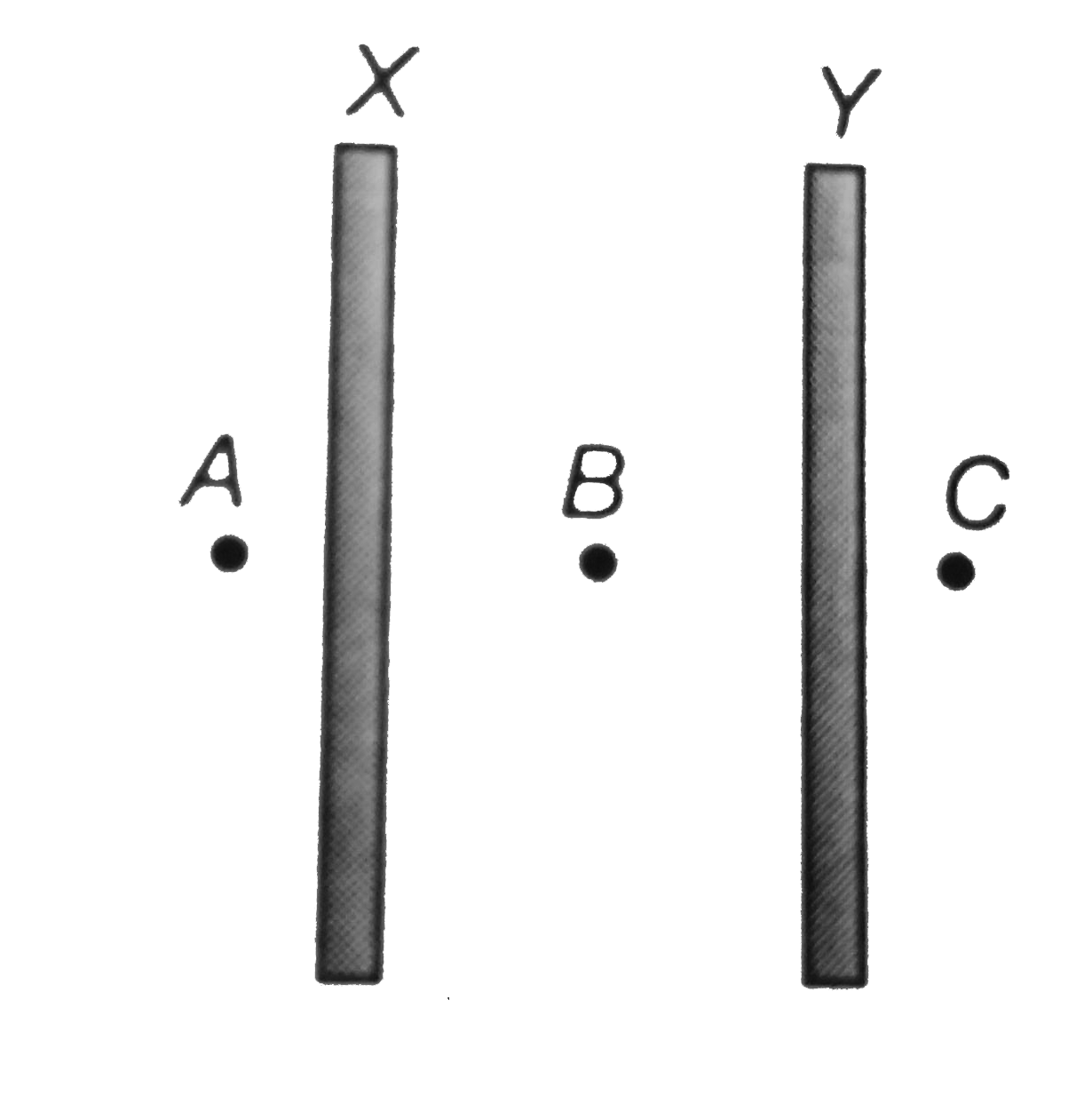
The field at is
The field at is
The field at and are of the same magnitude.
The field at and are of the same magnitude but in opposite directions.
The correct Answer is:A,C,D
at points
Topper's Solved these Questions
- ELECTROSTATICS AND GAUSS LAWBook:NARAYNAChapter:ELECTROSTATICS AND GAUSS LAWExercise:Passage I
Explore 3 Videos
- ELECTROSTATICS AND GAUSS LAWBook:NARAYNAChapter:ELECTROSTATICS AND GAUSS LAWExercise:Passage II
Explore 3 Videos
- ELECTROSTATICS AND GAUSS LAWBook:NARAYNAChapter:ELECTROSTATICS AND GAUSS LAWExercise:NCERT based Question
Explore 14 Videos
- ELECTROSTATIC POTENTIAL AND CAPACITANCEBook:NARAYNAChapter:ELECTROSTATIC POTENTIAL AND CAPACITANCEExercise:ADDITIONAL PROBLEMS
Explore 14 Videos
- EXPERIMENTAL PHYSICSBook:NARAYNAChapter:EXPERIMENTAL PHYSICSExercise:Comprehension type
Explore 6 Videos
Similar Questions
A and B are two large identical thin metal plates placed parallel to each other at a small separation. Plate A is given a charge Q. (i) Find the amount of charge on each of the two faces of A and B. (ii) Another identical plate C having charge 3Q is inserted between plate A and B such that distance of C from B is twice its distance from A. Plate A and B is shorted using a conducting wire. Find charge on all six faces of plates A, B and C. (iii) In the situation described in (ii) the plate A is grounded. Now write the charge on all six faces.

View SolutionTwo conducting plates A and B are placed parallel to each other. A is given a charge. Q1 and B a charge Q2. Find the distribution of charges on the four surface.
View Solution
Knowledge Check
Two large , parallel conducting plates X and Y , kept close to each other , are given Q1 and Q2(Q1>Q2). The four surfaces of the plates are A,B,C and D , as shown
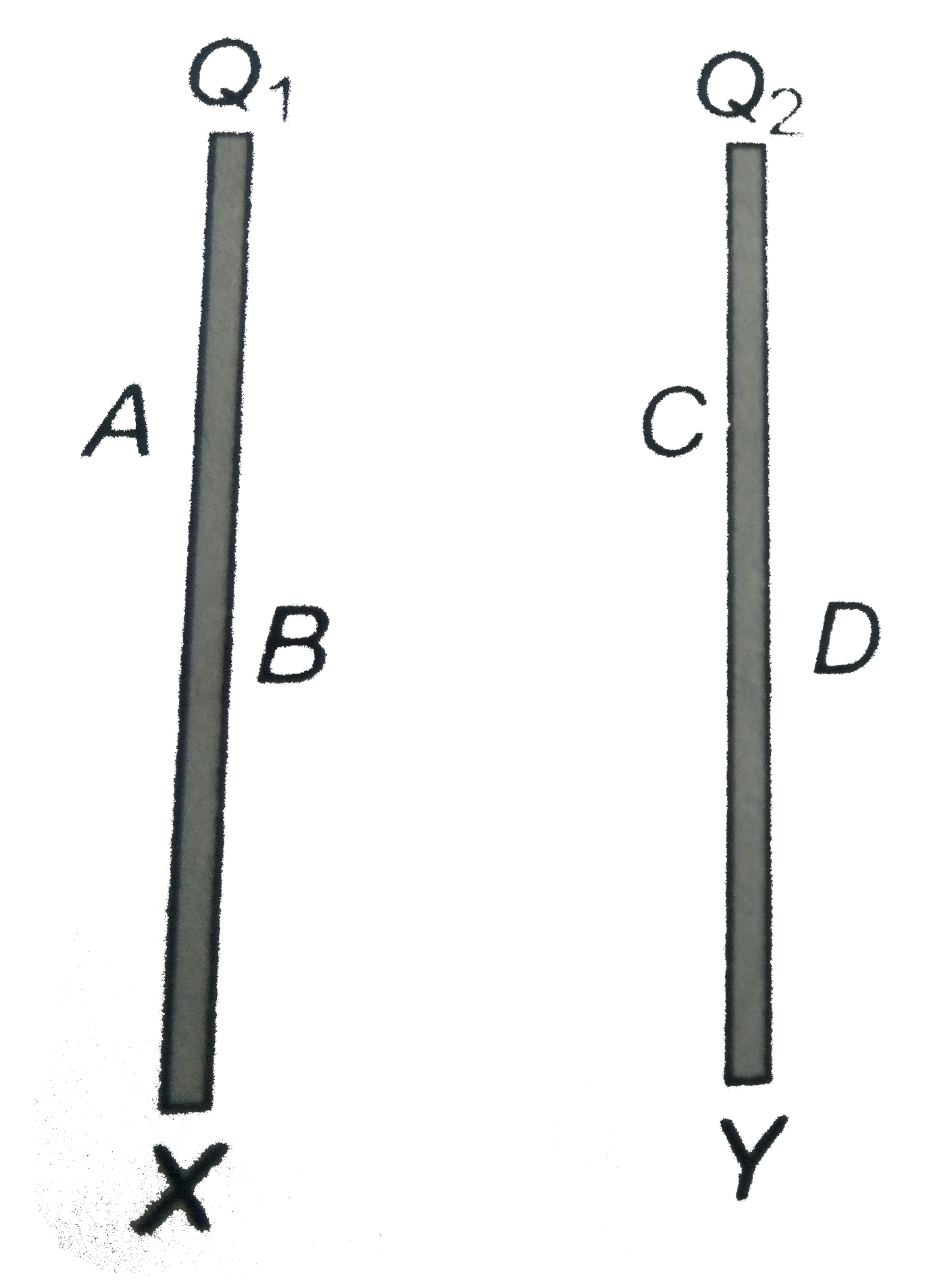
(i) The charge on A is 12(Q1+Q2)
(ii) The charge on B is 12(Q1−Q2)
(iii) The charge on C is 12(Q2−Q1)
(iv) The charge on D is 12(Q1+Q2)A(i),(ii)B(ii),(iii)C(ii),(iv)DAllTwo large parallel conducting plates are placed close to each other ,the inner surface of the two plates have surface charge densities +σ and −σ .The outer surfaces are without charge.The electric field has a magnitude of
Aσε0 in the region between the platesBσε0 in the region outside the plates.C2σε0 in the region between the platesDzero in the region outside the plates.There are two metallic plates of a parallel plate capacitor. One plate is given a charge +q while the other is earthed as shown. Points P,P1andP2 are taken as shown in adjoining figure. Then the electric intensity is not zero at :
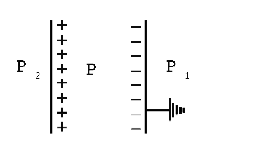 AP onlyBP1 onlyCP2 onlyDP,P1andP2
AP onlyBP1 onlyCP2 onlyDP,P1andP2
Two conducting plates X and Y, having large surface area A (on one side), are placed parallel to each other as shown in figure. The plate X is given a charge Q whereas the other is neutral. Find :
(a) The surface charge density at the inner surface of the plate X,
(b) The electric field at a point to the left of the plates,
(c) The electric field at a point in between the plates and
(d) The electric field at a point to the right of the plates.
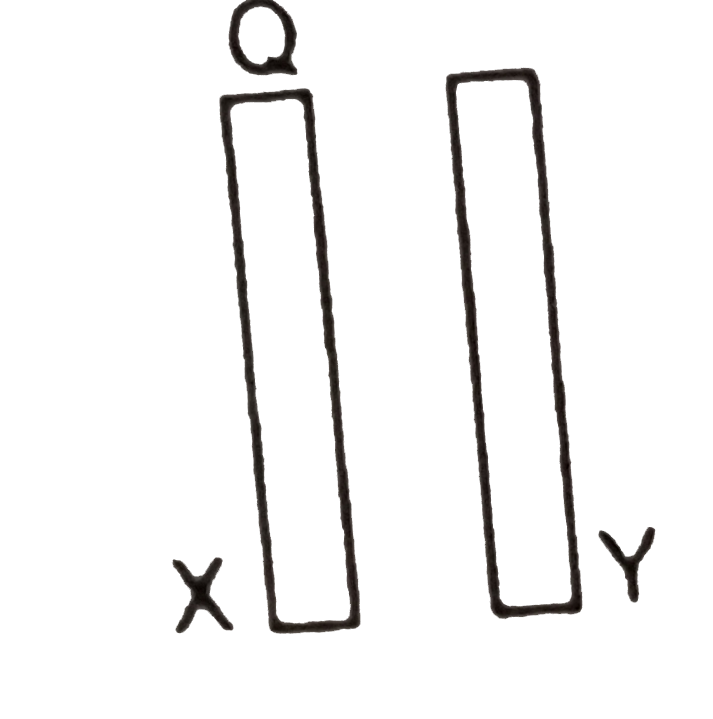
View SolutionThree large plates A, B and C are placed parallel to each other and charges are given as shown. The charge that appears on the left surface of plate B is
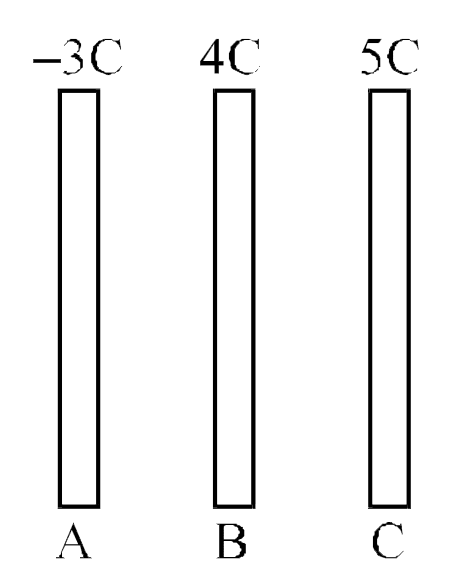
View SolutionThree large conducting plates with charges Q,−Q and Q are kept close to each other as shown in the figure. ( where Q=2uc). Now all the three plates A, B, and C are connected by a thin conducting wire. Find the charge ( in C) on left surface of plate A at electristatic equailibrium
View SolutionTwo conducting plates A and B are placed parallel to each other. A is given a charge Q1 and B a charge Q2. Prove that the charges on the inner surfaces are of equal magnitude and opposite sign.
View SolutionA, B, and C are three large, parallel conducting plates, placed horizontally. A and C are rightly fixed and earthed in figure . B is given some charge . Under the electrostatic and gravitational forces, B may be

View Solution

